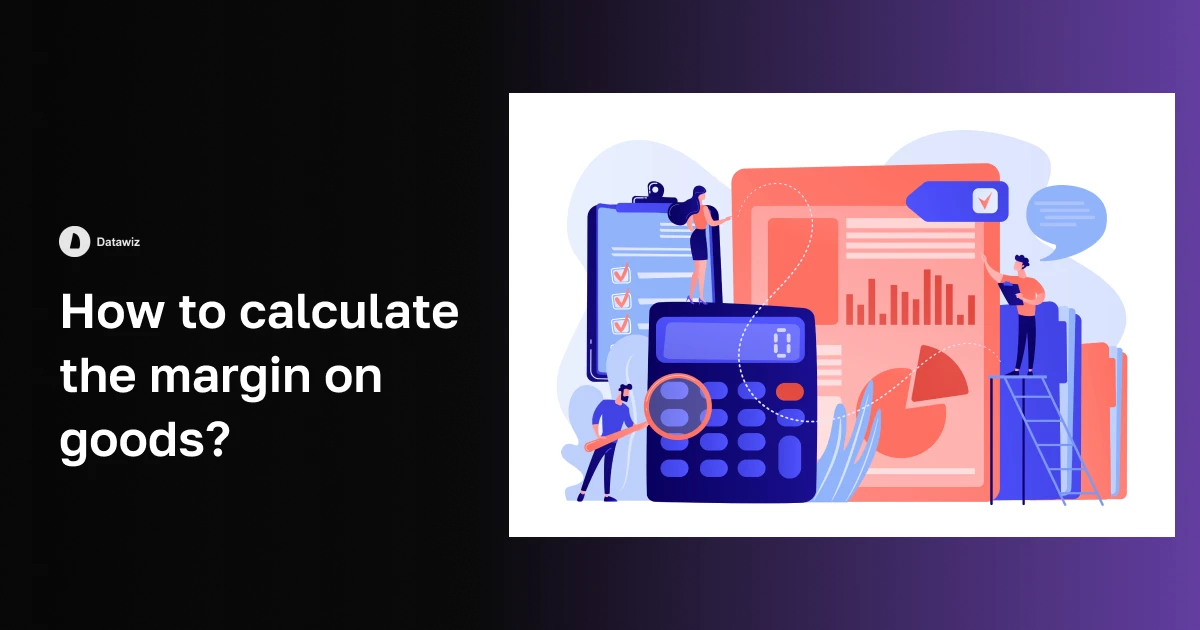Retail is a dynamic and competitive industry where proper management of markups,average receiptand profit margins plays a key role in business success.
How to Correctly Calculate Markup on Goods?
Markup is the difference between the cost of goods and their retail price. It allows you to cover all the costs associated with the realization and make a profit. Correctly determining the markup is not only a matter of finance, but also a strategic management tool.
Formula for calculating markup in percentages:
This simple formula helps to quickly calculate the markup percentage for any product.
Markup, % = (Selling Price - Cost of Sales) / Cost of Sales * 100%
However, to stay competitive, you need to take into account many factors.
What Does the Markup for a Product Depend On?
The following key aspects influence the formation of the markup:
- Demand for the product. The higher the popularity of the product, the more opportunity to set a significant markup.
- Market situation. Competitors' prices are an important benchmark. Analyze the cost of similar merchandise so that you do not go beyond a reasonable pricing policy.
- Operating costs. Include in the markup rent, utilities, hosting costs for online stores, labor costs.
- Taxes. These need to be taken into account to avoid operating at a loss.
- Brand image. Customers are willing to pay more if your store is associated with high quality service and reliability.
It is better to focus on the break-even point to determine the minimum level of markup. This will avoid losses and ensure stable income.
How to Avoid Mistakes in the Formation of Markup
It is not recommended to deliberately lower the markup in order to increase turnover. Competitors may lower prices in response, resulting in losses for all companies. Instead, focus on improving service quality, developing promotions and building a loyal customer base. For example, if you are able to set a high markup on a certain product, offer customers a discount or gift. This enhances brand reputation and encourages customer return.
How to Choose the Right Markup Strategy
Optimal markup strikes a balance between company profits and customer satisfaction. Here are some tips:
- Use software. Services help you understand which products are most profitable, what the average sales figures are, and how to improve store performance.
- Take seasonality into account. Markups on seasonal items can be higher during peak demand periods.
- Adapt to competitors. Monitor the market regularly to ensure your prices remain competitive.
How to Calculate Profit in Retail?
Profit is an indicator that determines the efficiency of a business. It shows how much money the company has left after all expenses have been deducted. It can be calculated at different stages:
- Gross profit. Revenue minus the cost of goods.
- Operating profit (EBIT). Gross profit minus operating expenses.
- EBITDA. Earnings before taxes, interest and depreciation.
- Net Profit. The final figure after all taxes are paid.
The formula for calculating profit in a store:
Profit for the month = revenue for the month - expenses for the month - taxes for the month
For an accurate calculation, use analytical tools. For example, Datawiz platform offers convenient solutions for analyzing data, automating calculations and optimizing profits.
Methods to Increase the Average Receipt
The average receipt in a store is the average amount that a customer leaves for one purchase. Increasing this indicator is one way to improve business profitability. Consider the methods that will help to raise this indicator:
- Related products. Recommend to customers merchandise that seamlessly complement the main purchase. For example, to the purchase of a laptop can be offered a bag, mouse or mat.
- Gifts and bonuses. Offer discounts for purchases over a certain amount. For example: “Buy for 1000 hryvnias and get a gift”.
- Promotions. Organize campaigns with temporary offers. Such campaigns encourage customers to make more purchases in one visit.
- Kits and bundles. Offer themed bundles. For example, a “skin care kit” that includes a cream, lotion and oil.
- Cross-sell and upsell. Sell higher-priced versions of products or services that complement the main purchase.
- Service Development. Free shipping on orders over a certain amount, convenient payment methods, professional advice - all these motivate customers to make more purchases.
- Improve merchandising. Use pleasant decoration, proper layout of goods and pleasant aroma in the store.
- Use ofloyalty programs. Personalized offers, reward cards, and individual discounts all increase customer loyalty and encourage customers to spend more.
- Locating major merchandise in the back of the store. This increases the likelihood of unplanned purchases.
How to Manage Retail with a BI System?
Datawiz is a powerful data analytics tool that helps automate retail processes. The platform provides:
- Assortment analysis: identification of the most profitable products.
- Sales reports: data on average receipt, number of transactions and other key indicators.
- Promotions recommendations: ideas to increase average receipt.
- Demand forecasting: help you plan your purchases.
UsingDatawiz, you can optimize your business processes and increase profits without significant investments.
 Co nowego?
Co nowego?





 Nie potrzebna karta bankowa!
Nie potrzebna karta bankowa!